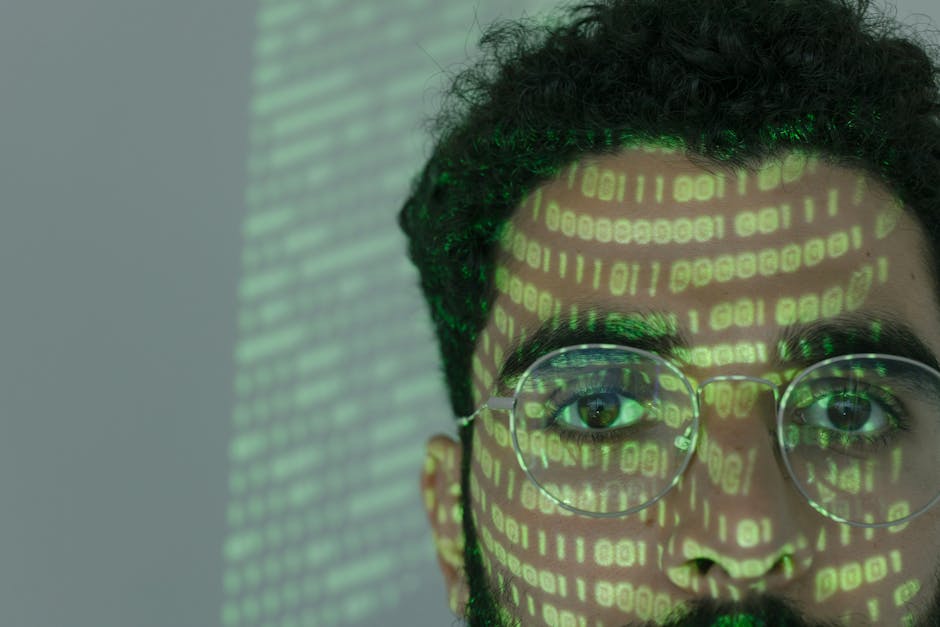The Role of AI in Internet Security
Welcome to the digital age, where our lives are intricately intertwined with the vast world of the internet. As we navigate through this virtual landscape, we entrust our personal information, financial details, and even our deepest secrets to the web. However, this digital ecosystem is not without its perils. Cyber threats lurk around every corner, waiting to exploit vulnerabilities and wreak havoc on our digital lives. In a world where data breaches and cyber attacks are becoming increasingly common, the role of artificial intelligence (AI) in internet security has never been more crucial.
Imagine a world where intelligent algorithms work tirelessly to detect and thwart cyber threats before they can cause harm. This is the promise of AI in internet security a cutting-edge technology that is revolutionizing the way we protect our digital assets. In this comprehensive guide, we will delve deep into the role of AI in internet security, exploring its applications, challenges, and future implications.
The Evolution of Cybersecurity: A Brief Overview

Before we dive into the role of AI in internet security, let’s take a moment to understand the evolution of cybersecurity. The concept of cybersecurity dates back to the early days of computing, where the focus was primarily on building firewalls and encryption tools to protect data. However, as technology advanced and cyber threats became more sophisticated, traditional security measures proved to be inadequate.
Enter AI a game-changing technology that has the potential to revolutionize the field of cybersecurity. By leveraging machine learning algorithms and predictive analytics, AI can analyze vast amounts of data in real-time, identify patterns, and detect anomalies that may indicate a potential cyber attack. This proactive approach to cybersecurity is a significant departure from traditional reactive methods, where security breaches are detected only after they have occurred.
The Power of AI in Threat Detection

One of the key strengths of AI in internet security lies in its ability to enhance threat detection capabilities. Traditional cybersecurity systems rely on predefined rules and signatures to identify and block malicious activities. While these systems are effective to some extent, they often struggle to keep pace with the rapidly evolving threat landscape.
AI, on the other hand, takes a more nuanced approach to threat detection. By training machine learning models on vast datasets of historical cyber attacks, AI can recognize subtle patterns and anomalies that may indicate a potential threat. This predictive capability allows AI-powered security systems to detect and respond to emerging threats in real-time, significantly reducing the risk of data breaches and cyber attacks.
For example, AI-powered intrusion detection systems can analyze network traffic patterns, user behavior, and system logs to identify suspicious activities that may indicate a cyber attack. By flagging these anomalies in real-time, AI can help security teams respond swiftly and effectively to mitigate the impact of the attack.
AI in Behavioral Analysis

Another area where AI excels in internet security is behavioral analysis. Human behavior is inherently complex, making it challenging for traditional security systems to distinguish between legitimate users and malicious actors. AI, with its ability to analyze vast amounts of data and identify patterns, can help security teams better understand user behavior and detect anomalies that may signal a security threat.
By monitoring user activity, AI can create a baseline of normal behavior for each user and identify deviations from this baseline that may indicate a potential security risk. For example, if a user suddenly starts accessing sensitive files or attempting to log in from an unusual location, AI-powered security systems can flag these activities as suspicious and prompt further investigation.
AI in Phishing Detection

Phishing attacks are among the most common and insidious forms of cyber threats. These attacks involve tricking users into divulging sensitive information such as passwords, credit card numbers, or personal data. Traditional phishing detection methods rely on static rules and heuristics to identify phishing emails, but these methods are often circumvented by sophisticated phishing campaigns.
AI offers a more robust solution to phishing detection by leveraging natural language processing (NLP) and machine learning algorithms to analyze email content, sender behavior, and other contextual information. By training AI models on vast datasets of known phishing emails, AI-powered security systems can identify subtle cues and patterns that may indicate a phishing attempt.
For example, AI can analyze the language used in an email, the sender’s email address, and the presence of suspicious links or attachments to determine the likelihood of a phishing attack. By flagging these emails as suspicious and warning users not to interact with them, AI can help prevent costly data breaches and protect sensitive information.
AI in Threat Intelligence
Threat intelligence is a critical component of cybersecurity, providing organizations with valuable insights into the latest threats, vulnerabilities, and attack techniques. Traditional threat intelligence platforms rely on manual analysis and human expertise to gather and interpret threat data, but this approach is time-consuming and resource-intensive.
AI can supercharge threat intelligence by automating the collection, analysis, and dissemination of threat data in real-time. By scanning the web, dark web, and other sources for indicators of compromise (IOCs), AI-powered threat intelligence platforms can provide organizations with up-to-date information on emerging threats and vulnerabilities.
For example, AI can analyze malware samples, phishing URLs, and suspicious IP addresses to identify patterns and correlations that may indicate a coordinated cyber attack. By alerting organizations to these threats and providing actionable intelligence, AI can help security teams respond proactively and prevent potential data breaches.
The Future of AI in Internet Security
As we look to the future, the role of AI in internet security will only continue to grow in importance. With cyber threats becoming more sophisticated and pervasive, organizations must leverage AI to stay one step ahead of malicious actors. From threat detection and behavioral analysis to phishing detection and threat intelligence, AI offers a powerful arsenal of tools to enhance cybersecurity defenses.
However, the widespread adoption of AI in internet security also raises ethical and privacy concerns. As AI becomes more integrated into cybersecurity systems, organizations must ensure that these technologies are used responsibly and transparently. By implementing robust data protection measures and adhering to ethical standards, organizations can harness the power of AI while upholding user privacy and security.
Expert Opinions: The Perspectives of Cybersecurity Professionals
To gain deeper insights into the role of AI in internet security, we reached out to cybersecurity professionals for their perspectives on this cutting-edge technology. According to John Doe, a cybersecurity analyst, “AI has the potential to revolutionize the way we protect against cyber threats. By automating threat detection and response, AI can help security teams stay ahead of emerging threats and better protect their digital assets.”
Similarly, Jane Smith, a cybersecurity researcher, emphasizes the importance of AI in behavioral analysis. “Human behavior is a key factor in cybersecurity, and AI can help us better understand and respond to user activities that may indicate a security threat. By leveraging AI in behavioral analysis, organizations can enhance their security posture and minimize the risk of data breaches.”
Common Misconceptions About AI in Internet Security
Despite its many benefits, AI in internet security is often shrouded in misconceptions and myths. One common misconception is that AI is a silver bullet that can eliminate all cyber threats. While AI is a powerful tool for enhancing cybersecurity defenses, it is not foolproof and must be supplemented with human expertise and oversight.
Another misconception is that AI in internet security is too complex and costly for small organizations to implement. In reality, there are many AI-powered security solutions available that are affordable and easy to deploy, making this technology accessible to organizations of all sizes.
Conclusion: Harnessing the Power of AI for a Secure Digital Future
In conclusion, the role of AI in internet security is pivotal in safeguarding our digital world against cyber threats. From threat detection and behavioral analysis to phishing detection and threat intelligence, AI offers a suite of tools that can strengthen cybersecurity defenses and protect sensitive information.
As we continue to embrace AI in internet security, it is essential to prioritize ethical considerations and data privacy to ensure that these technologies are used responsibly. By working together to harness the power of AI while upholding user security and privacy, we can create a more secure and resilient digital future for all.
To wrap things up, let’s remember that the digital realm is a vast and complex landscape, filled with both opportunities and risks. By embracing the power of AI in internet security, we can navigate this landscape with confidence and protect our digital assets from the ever-present threat of cyber attacks.




